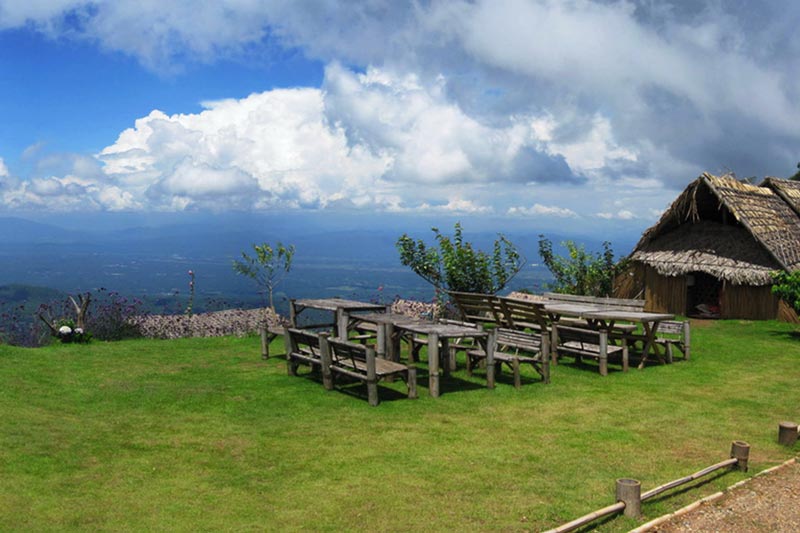Pick up guests at 13.00 hours: from anywhere downtown and proceed to Mae Rim, 16 kilometers north of Chiang Mai. Here we visit Wat Pa Dara Pirom, least-visited temples in Chiang Mai. Included in very few tourist itineraries, its natural surroundings, architecture provide visitors with a peace and spirituality. We continue to the impressive Mae Sa Falls where mountain water tumbles down over 8 cascades in a shady forest setting. Refreshed, proceed on twisting mountain roads up to the Royal Project at Ban Nong Hoi Kao, 800 meters above sea level. This mountain top location was populated by Hmong tribal people in 1942, and they used the cool climate to grow fields of opium poppies. Thanks to the charisma and the wise teachings of the late Thai King Bhumibol Adulyadej who visited here in 1972, villagers gradually switched to cultivating vegetables, flowers and fruit trees. The Royal Project 1986, and provided on-site motivation and materials to the local people. Today, it functions as agro-tourism and eco-tourism centre which supplies excellent vegetables and other fresh produce to the Project's Doi Kham' outlets in town, including a shop at Chiang Mai airport. We enjoy a coffee break and interesting time learning about planting and production before departing to experience the'highest highlight of the tour at the Mon Cham summit. Located at an altitude of 1400 metres, the panoramic views from here are outstanding, enhanced by the setting giant landscape. Was established in instruction, highly successful sun as it sinks slowly behind the giant landscape.
As dusk approaches, we drive down a short distance to the charming Hmong Hilltribe Lodge, a unique resort designed in local Hmong style. An international buffet dinner awaits us here, together with a cultural show that offers an entertaining insight into the Hmong culture and beliefs. At 21.00 hours we return to Chiang Mai, very likely with our camera SD cards full, and our heads filled with lasting memories incredible beauty. of Northern Thailand's incredible beauty.
REMARKS: Take a warm jacket to wear at the high altitude, especially during the cool season from November February. Comfortable walking shoes are also advised. You should dress conservatively for the temple visit.
.png)

.jpg)
.jpg)
.jpg)
.jpg)
.jpg)
.jpg)
.jpg)
.jpg)
.jpg)
.jpg)
.jpg)
.jpg)